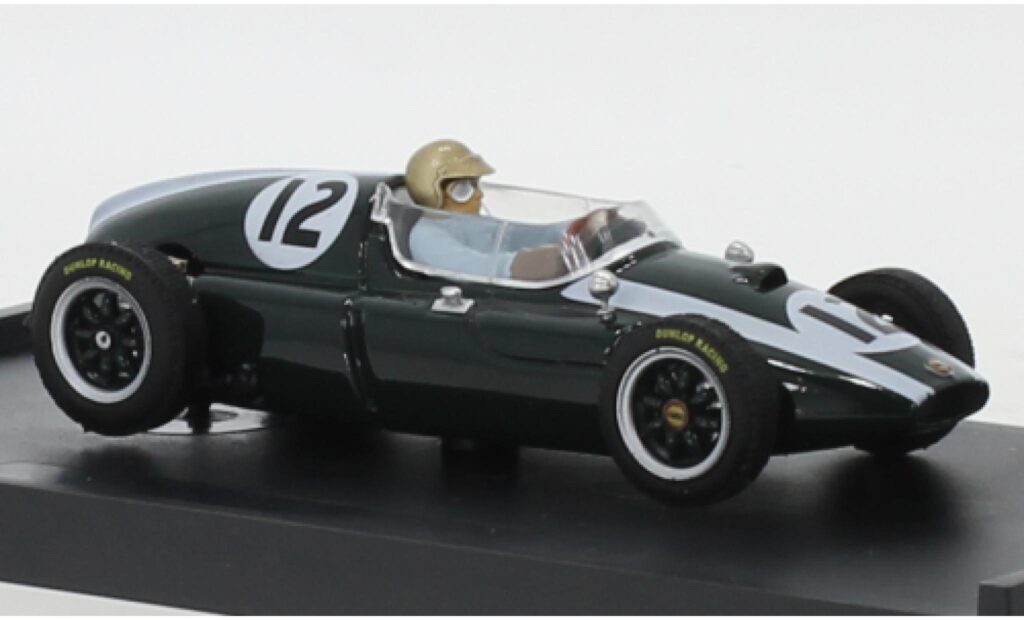The 12 Fastest F1 Cars Of All Time, Ranked. Formula One has been a sports event in the year 1946. It was when a handful of the top automobile manufacturers competed for the first time to determine which cars and drivers were the accurate on a specific track situated in Turin, Italy. The world championship took place in 1950. The most coveted trophy in motorsport is now being pursued by a constantly changing lineup of drivers and teams looking to prove their cars are superior to the competitors.
When determining the top Formula One cars of all time. Speed is measured not just by the speed they move in a straight line. But additionally by their performance throughout the race course and with the driver’s skill as well as braking. Handling and reliability playing key aspects in their final race times. Specific construction rules apply by FIA (Formula One’s official governing body) However, no 2 F1 cars are identical. There are a number of notable developments made by each team throughout the season to rise the performance of their cars and, eventually, improve their speed. It is important to note that FIA limitations are also in place periodically and therefore lap times may vary dramatically each year.
This is a take a look at the most enduring machines that graced. The long and exciting history of F1 and the numerous successes and disasters they faced and the numerous innovative ideas and groundbreaking designs they came up with to accomplish the distinction of being among the fastest F1 automobiles of all time.
12. Cooper T51 (1959)

Formula One was still in its infancy at the time. That it was the time that British Cooper Team first joined the race. The idea was conceived by a father-and- team that was led by a father and son team. The Cooper firm (of Mini Cooper fame) has grown from strength to strength and eventually created one of the very first rear-engine racing vehicles, the Cooper T51. It was not only an extremely competitive and fast machine. It also looked like a model, with its sleek design as well as its long nose and a low-slung forward driver’s seat. Which was used by generation of F1 cars that followed.
T51 had been raced by the pioneers of motor racing. Jack Brabham and Bruce McLaren (each of who would later create their own F1 teams). The car was initially equipped with the Coventry Climax 2,495-cc, four-cylinder engine and a four-speed Citroen gearbox, but it later adopted Maserati or Ferrari engines, as well as other transmissions. The chassis was constructed of steel tubulars and featured the basic double-wishbone suspension. Which was standard on race cars of the time.
At 140mph, the top speed for this car was eerie this Cooper T51 was primitive by modern standards. However, back in the day it was among the most influential automobiles to be entered into Formula One. As this small-scale, independent firm changed the way cars were constructed and helped pave the way for more efficient and more efficient cars later.
11. Lotus 49 (1967)
The 1960s witnessed huge advancements in the Formula One car, as evident by the stunning Lotus 49. It was raced by F1 legends Jim Clark and Graham Hill It was capable of speeds of more than 180 mph. Which is impressive for a car from the time, when safety features were hardly ever present and road handling was quite poor.
The design-wise In terms of design. The Lotus 49 had some unique and original features, not to mention the engine that was stressed that added to the chassis’ strength instead of having the chassis carry its own weight. The car also had the monocoque design, which means that the shell of the car was structural. Something that is the standard for modern F1 cars use today to cut weight while increasing their strength and security. It was powered by a Ford-Cosworth V8 engine that put out 415 horsepower of brakes at 9,500 rpm. Lotus 49 ushered in a new era of racing with high power which was to soon require the use of massive spoilers and slick tires to counteract the forces in play.
The Lotus 49 was the winner of the two Drivers’ and two Constructors Championships during 1968 and in 1970. The Lotus 49 left an indelible impression on the history of racing. It was a transition point between the older type of single-seat racers from the sixties and the new generation of wide. Low and extremely aerodynamic racers which are still in development.
10. Lotus 78 (1978)
Lotus 78 Lotus 78 was as recognizable as. It was famous thanks to its gold and black John Player Special cigarette livery. It was driven through Mario Andretti in the 1978 World Championship. Winning Team Lotus the Constructors’ Champion of the same year. As with the Lotus 49 and 72 that preceded that. The 78 had an naturally aspirated Ford Cosworth three-liter V8 engine. In contrast to its predecessors. That were becoming more competitive in their performance. The 78 profited by being the first car to utilize “ground effect” in Formula One motorsport.
Ground effect is the application of aerodynamics to create downforce. It was a revolutionary change for Formula One racing as it allowed cars to turn at greater speeds. While decreasing lap times and improving the handling. Lotus 78 Lotus 78 used sculpted fiberglass bodywork and the inverted wing of fiberglass. As well as a spoiler to create an aerodynamically superior vehicle with huge downforce unlike anything else that had come before it.
The payoff speak for themselves when The Lotus 78 cruised to victory in its first year of operation with five wins in the races of the year and dominating the podium throughout the memorable 1978 season. Apart from its performance it was also renowned for its timeless great looks. Actually in the event that this was a competition for the most stunning F1 cars. That the Lotus 78 might well have been the winner.
9. Brawn BGP 001 (2009)

This season has been among the most memorable seasons in recent. F1 history due to the outliers Brawn Grand Prix and an amazing story. At first Honda had developed a car. But they pulled out of the race shortly prior to the start to the race. Ross Brawn the Honda Team Director, purchased the team and immediately set to work preparing the car, which would be named Brawn BGP 001 Brawn BGP 2001. In preparation for the impending championship. But, at it was time for the initial race the car was not prepared, with a shoehorned Mercedes engine, mismatched components and balance problems.
BGP 001 BGP 001 was, as it was discovered, astonishingly swift and frequently beat their main rival Ferrari when they qualified, and this was largely due to it’s controversy-making “double diffuser wing.” This produced a substantial amount of downforce when compared to competitors’ designs. The design was a hotly debated issue, but it was eventually approved by the FIA on appeal.
This bet resulted in the most efficient car in the 2009 season featuring two experienced racers. Jenson Button and Rubens Barrichello driving. They often left the stunning Ferrari in the dust With Button ultimately winning the Drivers’ Championship. Brawn GP claiming the Constructor’s Championship, and Barrichello coming in third.
8. Williams FW14B (1992)
When Williams had a significant player and a major competitor. It was the FW14B which won them the most trophies racking up an impressive nine wins during the season of 1992. It was developed by Adrian Newey (later of McLaren and Red Bull). The FW14B was noted for its extremely light. Thanks to carbon fiber chassis as well as being technologically advanced due the active suspension as well as traction control.
The most important thing is that it was extremely fast in fact. The team was led by the legendary driver Nigel Mansell and Riccardo Patrese. The Williams FW14B ripped through the track following when it first appeared at the South African Grand Prix. Over the course of the year they would frequently procure over two seconds over their closest competitors. Which is a significant amount of time in terms of racing.
In the end, Mansell would go on to take home his first Drivers’ Championship, with Patrese coming in second place, and Williams winning his way to the Constructors’ Championship for the entire season. He was so impressed by Mansell’s car that fellow driver Sebastian Vettel purchased Mansell’s winning machine in 2020. Perhaps the most important piece of F1 memorabilia for those who have sufficient funds. satisfying pockets.
7. Ferrari F2004 (2004)
To claim the fact that Michael Schumacher was the dominant driver in the early part century is an understatement. The incredible machine that brought his world record seventh World Championship title was the Ferrari F2004. It was apparent that nothing could beat Ferrari at the time. Under the direction of the technical team of Ross Brawn. They improved over the previous seasons right until (and perhaps influencing) the FIA to put rules on their cars the next year and levelled the field.
It was the Ferrari F2004 won 15 out of 18 races on the calendar that season (13 of them won by Schumacher). This makes it among the most powerful automobiles in F1 time. It’s also among the fastest cars having set record lap times that have not been broken at Monza Magny-Cours and Monza as well as Shanghai. The success of the car was fueled by the need to construct stronger engines and gearboxes to match the racing standards of the year after year. As well as its outstanding handling capabilities as well as a maximum speed of 200 miles per hour.
Schumacher and Ferrari were the winners of that year’s Drivers’ and Constructors’ Championships and the F2004 is certainly one of the fastest vehicles that the Italian manufacturer has produced. It is more than anything else it’s a relic of an era prior to FIA regulations that. In addition to making racing more secure and competitive, slows down the speed that is Formula One racing.
6. Williams BMW FW26 (2004)
Although Ferrari F2004 Ferrari F2004 was almost unbeatable on a track. But it wasn’t always the fastest car of the year. In competition with the Ferrari in the identical championship came the Williams BMW FW26. Which Juan Pablo Montoya drove at an average speed of 162.950mph during qualifying. It record was the F1 lap record at the time. But it was not officially recognised because it wasn’t during an actual race.
The car’s design was unique and was nicknamed”the “walrus nose” due to the two vertical spars. That were placed on each side of the nosecone that gave the appearance of the appearance of tusks. While also maximizing airflow. This unique design proved efficient in tests as the vehicle was touted as a top contender to win the competition that year. It was hindered by issues with the setup and was unable to maintain its consistency under stress.
It was the Williams BMW FW26 was a end of the road for Williams since they didn’t regain their glory days. However, they would go on to win the title in Spain eight years after. It was likely to be the last car that truly competed Frank Williams’ team produced however. At least they left with a bang, and not even a whisper.
5. Red Bull RB7 (2011)
Few cars have achieved more as the Red Bull RB7. In the late year 2000 Red Bull emerged as an unbeatable team featuring Sebastian Vettel and Mark Webber as their drivers. With 18 of 19 poles, and twelve wins during 2011 Sebastian Vettel continued his four-title race from 2010 to 2013 on the legendary Red Bull car, and established Team Red Bull as a prominent team within Formula One.
The RB7 was certainly the perfect car at the 2011 championship by a amount. It was only able to finish two times outside of the top five spots. It was powered by an naturally-aspirated Renault V8 engine with a 2.4-liter capacity, an automatic 7-speed transmission, and utilized the KERS Kinetic Energy Recovery System which stores energy from braking to prepare an additional power boost when it is needed.
Despite its great success however. The Red Bull RB7 wasn’t without some controversy because of its exhaust-blown diffuser that was later banned from championships. Like the double diffuser found on the Brawn BGP 001 (which also the RB7 also employed) it was the EBD utilized exhaust gases to generate downforce. Other teams in the race swiftly copied this method. However Red Bull had satisfying of an advantage to surpass other teams to secure the victory in 2011.
4. Mclaren Mp4-4 (1988)
Formula One history was written during the time Alain Prost and Ayrton Senna drove their McLaren Mp4-4s during their 1988 World Championship. While their rivalry and speed were documented both in and out of the race however. It was the car that won the race, taking 15 out of 16 races they competed in together.
Created created by Steve Nichols, the MP4-4 was designed by Steve Nichols. It had the Steve Nichols-designed 1.5-liter, Honda V6 engine with 650 horsepower and was significantly less powerful than the naturally-aspirated competitors with engines. The MP4-4 was also fuel-efficient, with a capacity limited to 150 liters. this, in conjunction with the smaller engine, led to an ultra-lightweight, super-streamlined vehicle that was incredibly aggressive, winning Senna with 13 of the 16 poles. With no technical gimmicks and no fancy features, it was the McLaren Mp4-4 resembled a go-kart on steroids, and is the one that inspired a lot of racers, like Lewis Hamilton, from an early stage of his career.
The MP4-4 was a complete disaster in the other teams and ended up winning the race, with Senna being the winner of the 1988 Drivers’ Championship, Prost finishing second as well as McLaren getting their third Constructors Champion title. Unfortunately, following Ayrton Senna’s passing in 1994, following the Williams FW 16 crashed in the San Marino Grand Prix. The golden age of Formula One motorsport ended. However this season in 1988 will remain in the memory of all those who watched. It as it demonstrated the perfect connection. Between machine and man when they were pushed to the maximum limits of their capabilities.
3. Red Bull RB18 (2022)
Red Bull has gone from growth to strength since their first victory in the championship back in 2010. However, after 2014, they struggled to stay to stay in the shadow of their nearest competitor, Mercedes. The situation changed in 2022 when they removed Mercedes. German team after their remarkable 8-year dominance at the top due. The determination of Max Verstappen’s driver Sergio Perez and the excellent Red Bull RB18.
The FIA has issued new regulations on aerodynamics for the season 2022 and Red Bull’s design director Adrian Newey turned these to Red Bull’s advantage by designing an aerodynamic car with ground effects that produced a huge volume of force. In the end, the RB18 was able to stick on the tracks like glue and that, when combined by a modified suspension created a car that did a great job and was fast through the turns.
Red Bull RB18 was a reliable car. Red Bull RB18 was also solid due to its compact but robust Honda engine as well as the other factors that together made for an extremely reliable automobiles in that year’s racing. The RB18 won the race in the end and Verstappen taking home 16 out of that season’s 22 Grands Prix and Perez winning two. A bit refreshing for everyone but Mercedes enthusiasts Red Bull was the Constructors’ Championship’s new winner and a two-time World Champion in the young Dutch driver. This was the first time they’ve celebrated winning a championship since 2013.
2. Ferrari SF70H (2017)
Although Mercedes as well as Red Bull had dominated Formula One since 2010 Ferrari was always competitive and had a decent chance in winning the Constructors Championship with the SF70H in 2017. With two world champions in Kimi Raikkonen as well as Sebastian Vettel, driving the two horses that prancing the Scuderia Ferrari’s 70th anniversary car was definitely one to celebrate.
The SF70H was equipped with a six-cylinder 1600cc engine. That was limited to 1,950 rpm and delivering upwards of 1,000 horsepower. The car was huge at five meters in length and 2 meters wide and its chassis was honeycomb and carbon fiber composite, which made it lightweight at 728 kg in weight. Its semiautomatic transmission was sophisticated featuring eight gears forward and an efficient shifter as well as disc brakes made of carbon fiber. That all contributed to its incredible performance.
With 20 podiums from the course of 20 in 2017 with the SF70H, it was extremely fast. Sebastian Vettel and Scuderia Ferrari both finished second during their respective Championships in the year. The Italian marque received an important boost to its confidence after Vettel placed first in the highly-popular Monaco Grand Prix, placing Ferrari prominently back in the spotlight and giving their fans the cheery “Tifosi,” much to cheer throughout the remainder this season.
1. Mercedes W11 (2020)
The Mercedes W11, or the Mercedes-AMG F1 W11 EQ Performance for its more snarky name. Is one of the most impressive Formula One cars in recent time. In the run-up to the 2020 season Mercedes were facing increasing pressure from their rivals Red Bull if they were to keep their status as one of the race’s desirable constructors. They needed to build an automobile that could compete with their veteran racers Lewis Hamilton and Valtteri Bottas.
The W11 was perfectly tuned with it’s Mercedes chassis and Mercedes transmission. As well as Mercedes V6 engine that produced 1,025 horsepower. It also prevented Team Red Bull at bay throughout the entire season, and gave young Mercedes top driver George Russell a chance to shine as he replaced a COVID-stricken Hamilton who was able to record the fastest lap of Sakhir Grand Prix. Sakhir Grand Prix.
With numerous lap records set across various circuits in the year 2020 The Mercedes W11 is often cited as the fastest F1 vehicle of all time. With the unstoppable talents of Hamilton the car was a force to be taken seriously by winning both the Constructors’ and Drivers Championships. It also dominated that year’s payoff with 23 podiums, 13 victories, as well as nine of the fastest laps (Bottas placed second). In winning the W11, Team Mercedes beat Ferrari’s record of six consecutive championships. They’ll continue their winning streak in 2021 to be the most successful builders of all time in Formula One history.
Q&A
Is there a fastest F1 car of all time?
2006 RA106 F1 car
It is the official F1 highest speed was attained from Honda’s 2006 RA106 F1 car in its testing. With its unlimited V10 engine and precise adjustments. It clocked astonishing 246.91 miles per hour (397.36 km/h) which is just shy of the Honda’s 248.55 speed (400 km/h) target.
What is the most iconic F1 car ever?
The RB19 isn’t the only car that has won every race, with the exception of one during the F1 season however. A higher number of wins provides Red Bull the higher percentage. However, this doesn’t discredit the power of the fabled MP4/4. It’s probably the most well-known F1 car featuring its famous red-and-white livery.
Is Bugatti faster than F1?
Originally packing 1,826 hp with a theoretical top speed over 300 mph. The version folks can buy only tops out at 236 mph. Sticking with the F1 comparison, Bugatti points out that’s faster than the current F1 speed record (231 mph). But as we all know, racing isn’t just about flat-out thrust.




